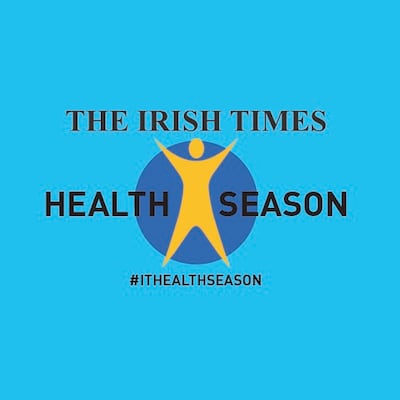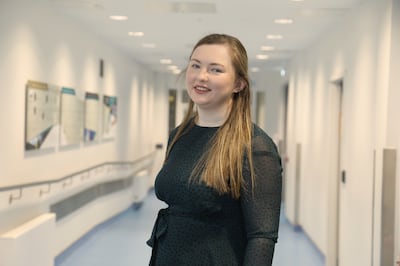
Stress is an established risk factor for having a stroke, but having a sense of control while under prolonged pressure considerably lessens the impact, as the latest Irish-led research from an extensive international study shows.
Those who reported severe work stress were more than twice as likely to have an ischaemic stroke (due to a clot) and more than five times as likely to have a haemorrhagic stroke (due to bleeding in the brain), compared to those who reported no work stress. However, the increased risk was significantly lower for individuals who felt they had high control over their work/life, compared to those who felt they had low control, according to the findings of research led by Dr Catriona Reddin, at University of Galway’s College of Medicine, Nursing and Health Sciences. The research team analysed data from the global Interstroke study, which involved more than 26,000 people in Europe, Asia, North and South America, the Middle East and Africa.
“Although we may not be able to eliminate stress from the workplace, efforts to improve individuals’ perceived control in the workplace may modify the risk of stroke associated with stress,” Dr Reddin tells The Irish Times. Previous studies evaluating “locus of control” – ie, people’s perception of their degree of control over situations – have looked at interventions such as flexible working hours and problem-solving committees. She and her colleagues believe that locus of control warrants further evaluation for public health interventions.
The research also found that the occurrence of any stressful life event increased the risk of stroke by 17 per cent, with the occurrence of two or more stressful life events increasing the risk of stroke by 31 per cent. While you might not be able to avoid stressful life events such as job loss or business failure, divorce/separation, personal injury or illness, death or major illness of a close family member or violence, there are other risk factors for stroke that we do have control over.
READ MORE
This is the overall good news that has come out of the Interstroke study, as its principal investigator, Prof Martin O’Donnell, dean of the University of Galway’s College of Medicine, Nursing and Health Sciences, explains. He has been involved with this research, in partnership with Prof Salim Yusuf from McMaster University in Canada, since its inception in 2006. Having seen the success of the Interheart study in identifying measurable and modifiable risk factors for heart disease, they wanted to do something similar for strokes.
Prof O’Donnell was working in McMaster University at the time but continued to lead the research after returning to Ireland in 2010. He is now professor of Neurovascular Medicine at the University of Galway and consultant geriatrician at University Hospital Galway, Ireland. The study, which covers 32 countries around the world, has collected data from people who had a stroke and, in each case, from a corresponding, age-matched and sex-matched individual in the same community who had not.
At the outset they thought that lifestyle factors accounted for roughly half of the incidence of stroke. “What we know from our study, and also from some work done by the Global Burden of Disease [study] that these risk factors are more important than we thought they were,” says Prof O’Donnell. They identified 10 main risk factors which, collectively, are associated with nine out of 10 strokes worldwide. These were similar in all regions, age groups and in men and women, although the importance of some risk factors appeared to vary by region.

Another component of the study is looking at the part genes play in causing strokes, about which some limited findings have been published. This is work in progress, which is being fed into larger genetics research. Some health conditions have a strong genetic component but with most usual strokes, says Prof O’Donnell, while there is a genetic contribution, “it is an accumulation of multiple different genes”.
In many ways it is a positive message, he continues, that so much of stroke risk is under our control and that a lot of the contributing factors are things that can be modified. However, these risk factors do have different degrees of modifiability. Behaviour around some of them, such as physical activity and diet, can be difficult to change, he acknowledges.
“Sometimes we articulate recommendations in a binary sense: you do this or you do that but what the study also shows is that a number of changes in a number of risk factors can accumulate to have a really meaningful reduction in risk.”
In this month of new year resolutions, when people often attempt to adopt radically new habits, most people will not have to do that to reduce their chances of getting a stroke.
10 factors that account for 90 per cent of stroke risk
- Hypertension (high blood pressure)
- Smoking
- Obesity
- Diabetes
- Lack of physical activity
- Poor diet
- More than 30 drinks per month or binge drinking
- Ratio of blood lipids, apolipoprotein B (apo B) to apolipoprotein AI (apo AI)
- Heart conditions, particularly atrial fibrillation (irregular heart beat)
- Psychosocial stress/depression
Fish, chicken and vegetables
“You don’t need to make extreme changes; you just need to make a profile of changes,” he says. These might include walking more, following the so-called Mediterranean diet more closely, eg eating more fish, chicken and vegetables, and also reducing alcohol consumption. The study did not find a link between low-level drinking and stroke. However, high alcohol intake – defined as more than 14 drinks a week for women and more than 21 drinks a week for men – was linked with a 57 per cent increase in stroke. Greater knowledge of risk factors is important both for individuals and policymakers in Ireland, where about 7,500 people a year suffer a stroke and 2,000 people die as a result of stroke. Fatalities apart, it is the most common cause of acquired disability and it is estimated that 30,000 people are living here with significant stroke-induced impairments.
If you’re implementing policy, you need to know “where is the best bang for your buck”; where you should invest resources and what you can expect from certain programmes. How modifiable factors are also has to be considered. “Take something like atrial fibrillation [irregular heartbeat] – if you identify it and people go on blood thinners, you reduce the risk of stroke by about three-quarters or at least two-thirds.”
If you were to pick one risk factor to prioritise to reduce the incidence of stroke, says Prof O’Donnell, it would be hypertension, ie high blood pressure. The study found the number of strokes would be practically cut in half if hypertension was eliminated.
“It is so easy to measure and so straightforward to treat,” he says. His advice to anyone reading this who has not had their blood pressure checked, particularly if over 40, is to go get it measured immediately. This can be done in many pharmacies as well as in any GP surgery.

Prevention of hypertension not only helps to avoid a stroke, heart and kidney disease, but has also been shown to reduce dementia. “If you want to stay out of a nursing home, get your blood pressure checked” is often a more potent argument for action, he suggests wryly.
If you do have hypertension and are prescribed medication, “you don’t have a disease, you have a risk factor”, he stresses. “It’s important people don’t feel they have an illness because they are taking medication.” While he understands people’s resistance to medication, it is “taking a tablet to have a longer life and more independent life during that time”.
The risk of hypertension increases with age but you also more likely to develop it if you have a poor diet, increased weight and don’t engage in physical activity. So it’s clear many of the risk factors for stroke are interlinked. After hypertension, the study flags physical activity and diet as targets with the next biggest potential for reducing strokes on a population-wide basis, followed by the cessation of smoking. Researchers concluded that the number of strokes could be cut by 36 per cent if people were physically active, by 19 per cent if they had better diets and by 12 per cent if smoking was eliminated.
Improved knowledge, screening and medication are tackling strokes in two ways: preventing it and preventing it happening until an older age. The age-adjusted incidence of stroke is going down in western Europe, yet it is a growing problem too.
“Instead of getting a stroke at 70, you’re getting it at 82,” says Prof O’Donnell, which means more people are living healthier lives longer. “But because life expectancy has gone up, the burden of stroke is actually going up.”
Stroke in Ireland by numbers
- 7,500 people a year have a stroke
- 2,000 people die as a result of a stroke annually
- 30,000 people are living with disabilities as a result of a stroke
Delivery of acute care
What steps would he advocate for our health system on the basis of what is now known about risk factors for stroke? “Probably a greater investment in public health strategies towards public education and universal funded access to preventive therapies for all cardiovascular events.” In tackling hypertension, for example, you not only prevent stroke but also heart disease, kidney disease and cardiovascular disease.
Delivery of acute care for stroke patients tends to attract all the attention, but prevention should obviously be the priority, he says, preventing people having to access the acute healthcare system in the first place. “This emphasis on primary care in community and in resourcing easy access to preventive strategies to reduce the burden of cardiovascular disease, and in our case stroke, is something we could do a better job on.”
With stroke, and many other illnesses, prevention could be part of the solution to the overwhelming crisis in acute healthcare that we are seeing in hospitals around the country. But that requires a long-term view, as it takes at least a decade for preventive strategies to start showing results – “longer than the cycle of a government”, he remarks.
Also, “nobody wakes up and says, ‘today is the day I would have had my stroke if I hadn’t taken my antihypertensive medication’”. Preventive therapy is “a kind of a leap of faith – people trust that what they’re taking is preventing disease, and it is.” But it is hard for people to appreciate the gains.
Meanwhile, publication of Interstroke findings on the link between depression and strokes is imminent. There will also be a paper on sleep, which is a key and nearly forgotten aspect, O’Donnell adds, and is interlinked with diet and physical activity – not to mention chronic stress.

Managing stress
The importance of a sense of control in lessening the unhealthy effects of stress, as highlighted in the latest Interstroke research, is more evidence of how mindset is crucial to managing stress.
Stress is normal, as is the biochemical response in the body it provokes. It’s the cumulative effect of chronic stress that does the damage, and that’s why stress management is one of the pillars of lifestyle medicine, says Dr Pádraic Dunne, a lecturer at the Centre for Positive Psychology and Health in RCSI University of Medicine and Health Sciences.
It’s all about “perceived threat”, he explains, that “rustle in the jungle” suggesting something is coming to get you. Whether that emanates from your own negative thinking or an external force, such as a bully at work, the brain responds in exactly the same way. Ironically perhaps, the sense of control, which has been shown to be protective, may in some cases be an illusion, but it is the perception that matters.
The growth mindset approach to stress management teaches how you can control only what’s in your sphere of influence. Some people are very good at recognising this, he says, while others feel they need to control more.
“The only thing you can control is your response to internal and external events and you are far more susceptible to threat internally if you think that your sphere of influence is much bigger than that,” he says.
An immunologist and psychotherapist, Dr Dunne outlines the nature of a body in high alert, which includes raised blood pressure, changes in glucose metabolism and activation of the immune response. As the biggest immune response outside the lymph nodes occurs in the gut, nerves constantly activating the immune systems will disrupt the gut lining.
Stress also interferes with sleep, which will push you towards an unhealthier lifestyle. For one thing, ghrelin, a hunger hormone, is produced in the bloodstream when you start getting disrupted sleep, and that leads to seeking food, almost invariably the high-sugar, high-fat variety. You will also be suffering from fatigue, so less likely to exercise, which is crucial for keeping yourself healthy.
Think of the prolonged effect of chronic stress – through disrupted sleep, changes in metabolism, reduced likelihood of exercising and increased appetite, particularly for unhealthier foods – and it is clear how it will have “lit the taper”, he says, for serious health issues such as stroke.
“The key, for me anyway, is self-compassion,” concludes Dr Dunne, who is one of five contributors to the RCSI book Positive Health, which outlines more than 100 evidence-based activities for people to improve their health and wellbeing and decrease their risk of illness. When you have self-compassion, you can silence the inner critic, acknowledge what is outside your control and regard mistakes as only human. In becoming more accepting of reality and of what you can and cannot control, he adds, “the threat response is dialled down”.













